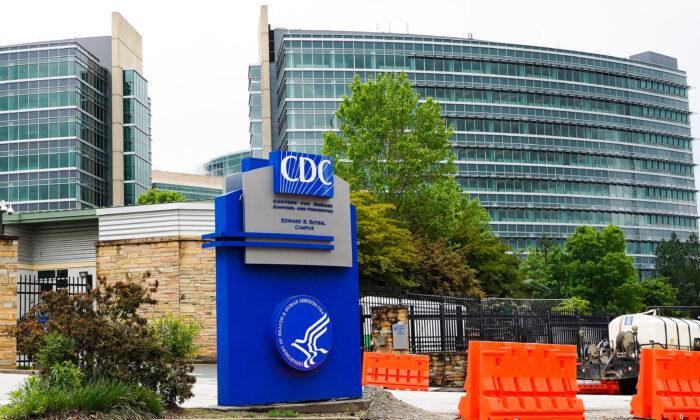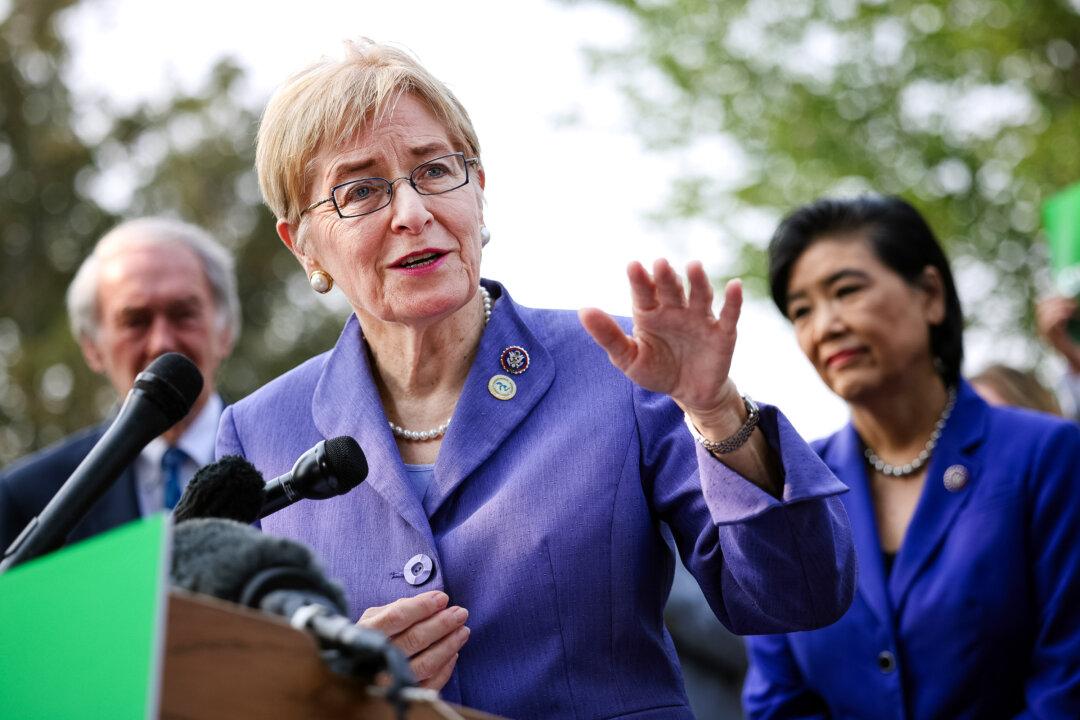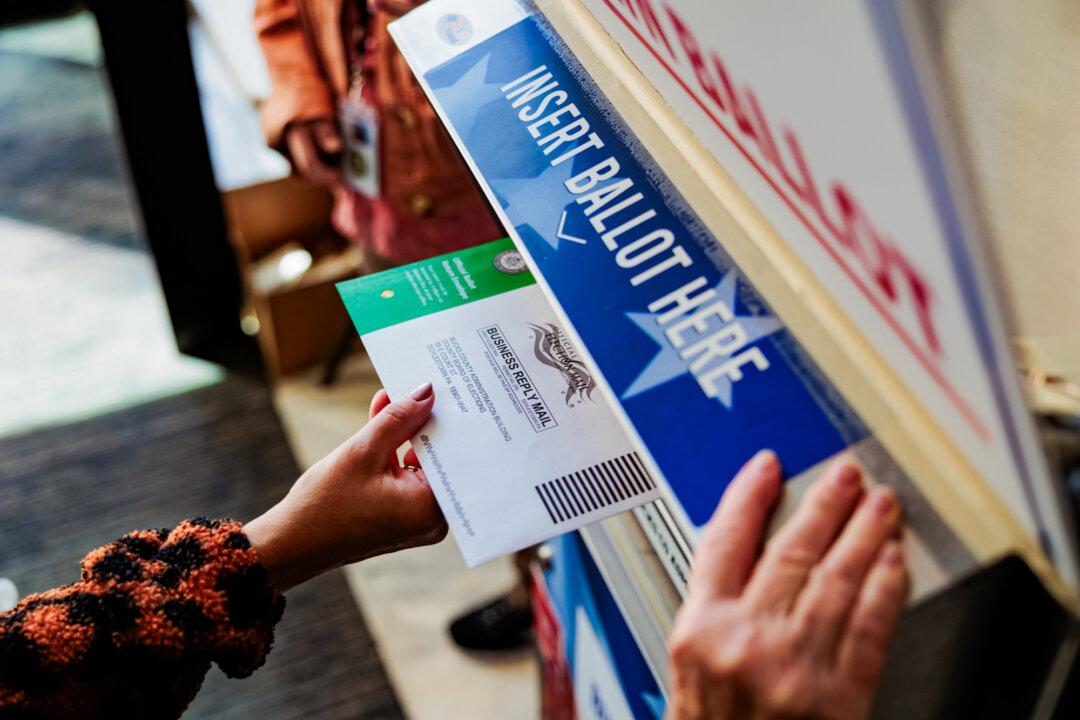The Centers for Disease Control and Prevention (CDC) altered its definition of COVID-19 cases among the vaccinated, leading to a lower number of cases classified as a breakthrough, according to documents obtained by The Epoch Times.
“We have revised the case definition,” Dr. Marc Fischer, head of the CDC’s Vaccine Breakthrough Case Investigation Team, wrote to colleagues at the time.
The rationale for the change was redacted.
CDC spokesman Scott Pauley defended the altered definition.
“CDC made the change to the definition of a breakthrough infection time period due to the most current data that showed that the 14-day period was required for an effective antibody response to the vaccines,” Mr. Pauley told The Epoch Times in an email.
“That, in combination with the data showing that many cases of COVID-19 were incubating for up to two weeks before becoming symptomatic, required the change to refine the time period to eliminate cases where exposure happened before the vaccination response would be effective.”
Dr. Harvey Risch, professor emeritus of epidemiology at the Yale School of Public Health, said there was “no cogent rationale” for excluding early cases and other events among the vaccinated, whether they occurred within seven days or 14 days.
“With either of these delays, CDC addressed what is the theoretical best that the vaccination could achieve. If the vaccines don’t work for the first 7 or 14 days or increase risk of getting COVID-19 during that period, that is part of what happens when they are deployed in a population,” Dr. Risch told The Epoch Times via email.
Dr. Jay Bhattacharya, a professor of health policy at Stanford University, said the CDC should have been focused on advising people that they weren’t as protected immediately after vaccination.
“Rather than playing games with the definition of breakthrough cases,” Dr. Bhattacharya told The Epoch Times in an email, the CDC should have warned “recently vaccinated vulnerable older people that they were at higher risk for being infected during that period.”

Undercount
The CDC excluded some post-vaccination cases because they didn’t meet the updated definition, the documents show, thus providing an inflated view of vaccine effectiveness.One document, for instance, shows that Kansas in early 2021 reported 37 cases among the vaccinated.
Thirty-four cases weren’t counted because they occurred after receipt of one dose, not two. Until recently, the primary series for both vaccines was two doses, with the second dose not advised until at least 21 days after the first dose.
The other three cases happened after a second dose, but the CDC didn’t count them as breakthrough cases because they happened within 13 days of completion of a primary series, Dr. Fischer informed colleagues in an email.
On Jan. 29, 2021, the CDC learned in a call with Maryland health officials that a cluster appeared to stem from a person who was vaccinated with a single dose before experiencing symptoms. A CDC official said it was a “possible breakthrough case,” but the case wouldn’t have been counted under either the earlier or later breakthrough definition.
In another likely form of suppression of the true number of cases, states weren’t able to report cases through the National Notifiable Diseases Surveillance System until February 2021, according to one of the emails. Kansas was the first state to send information through the system, according to a Feb. 1, 2021, email reporting the 37 cases.
States could also report cases outside of the system through calls, as could health care providers, according to another email. Reports to the Vaccine Adverse Event Reporting System were also analyzed for possible inclusion.

Change Came After Emails About ‘Vaccine Failure’
The breakthrough case definition was revised after multiple CDC officials emailed about the vaccines failing to prevent infection.Dr. Fischer said in one email on Dec. 21, 2020, that he was directed by a superior “to start working on a protocol to evaluate COVID vaccine failures or breakthrough cases.”
At about the same time, CDC officials circulated a one-page document about investigating post-vaccination cases.
“What? There is a 1-pager from Tom about vaccine failures?” Dr. Nancy Messionnier, another top CDC official, said on Jan. 27, 2021, after hearing about the document, which was being distributed by CDC medical officer Dr. Thomas Clark.
The version of the document that The Epoch Times received was fully redacted. After Dr. Clark was asked for an unredacted version, the CDC declined to provide any other versions of the document.
Dr. Fischer also made a presentation about breakthrough cases near the end of January 2021 and sent those slides to colleagues after emphasizing that he had developed them “for internal use” and that the slides “have not been reviewed or cleared by anyone.” He didn’t respond when asked for the slides.
Soon after the change, the CDC was alerted to a college athlete who tested positive for COVID-19 about three weeks after completing a Pfizer primary series. One CDC official described it as a “potential breakthrough case” and said the data would have to be reviewed to see whether it would be counted.
Time Exclusion
The CDC initially floated (pdf) a plan to count a person as “fully vaccinated” as early as seven days after the completion of a primary series, but it ultimately settled on 14 days after completion.The CDC declined to provide the name of the official who decided on the definition of fully vaccinated. The agency, in response to a Freedom of Information Act request, also said it didn’t have any records pertaining to the decision to exclude cases that occur in what amounts to at least 35 days after the first vaccine dose.
The trials found that efficacy against symptomatic COVID-19 was much lower within days of vaccination. In Pfizer’s trial, for instance, suspected cases within seven days of a vaccine dose numbered 409 among the vaccinated versus 287 among placebo recipients. Moderna estimated a 50.8 percent efficacy within 14 days of the first dose, compared to 92 percent efficacy 15 or more days after the dose.





